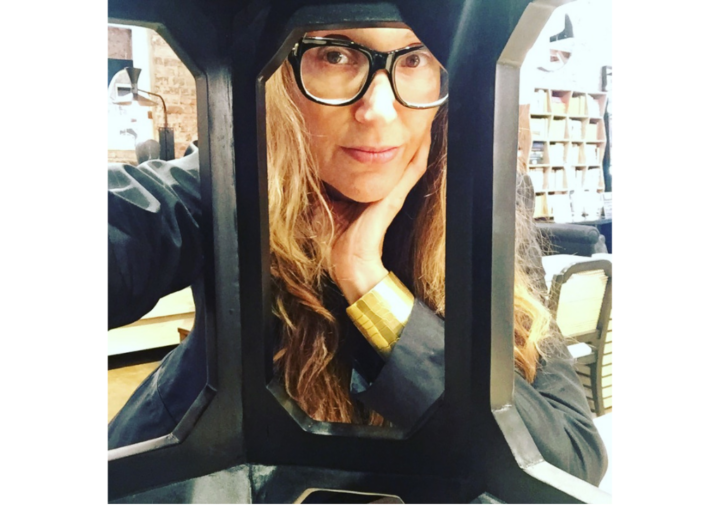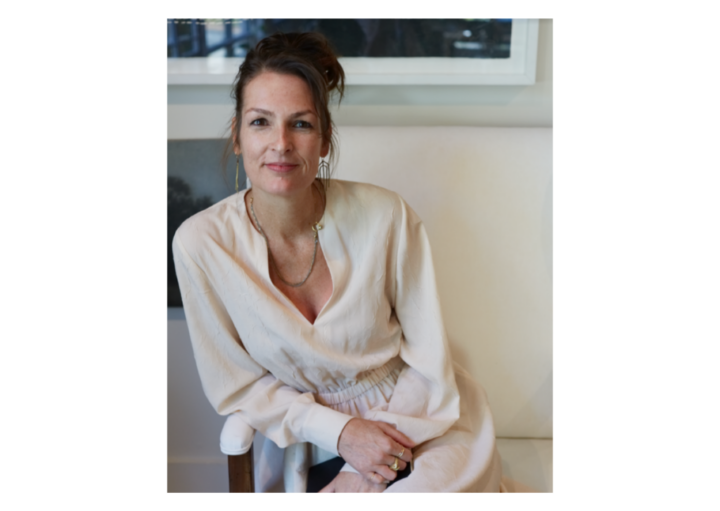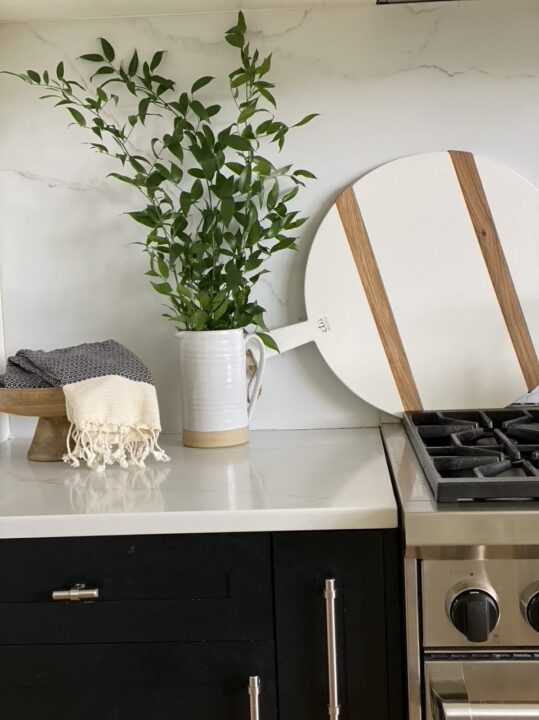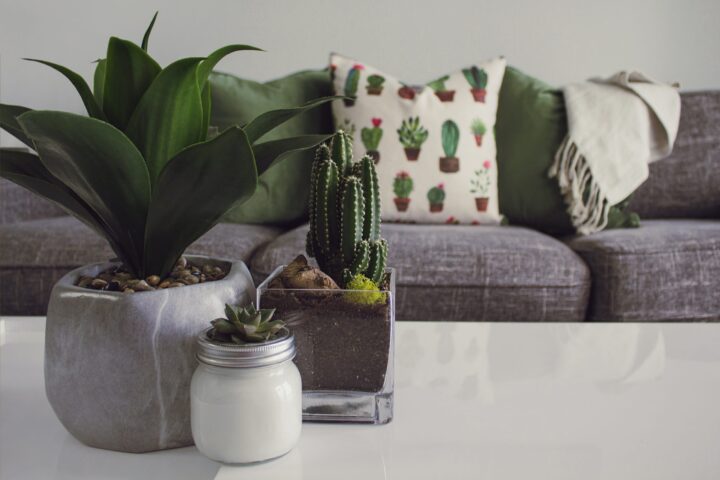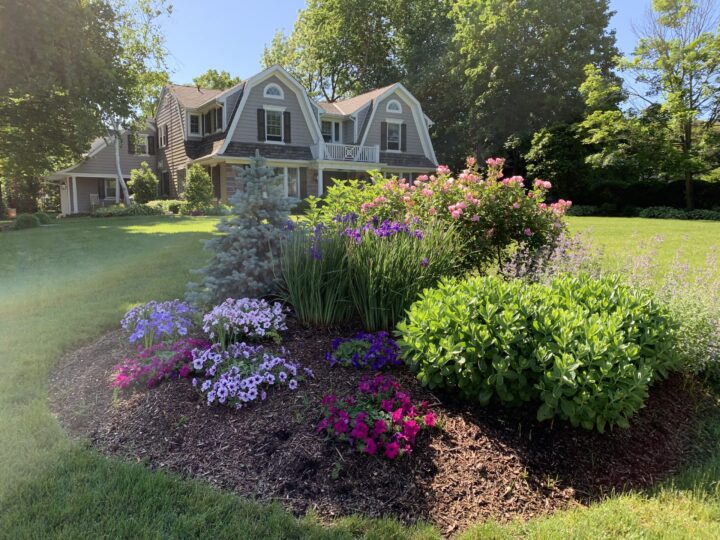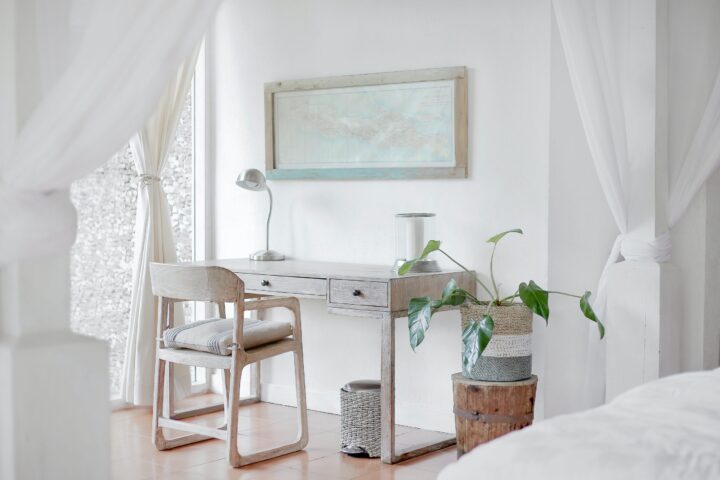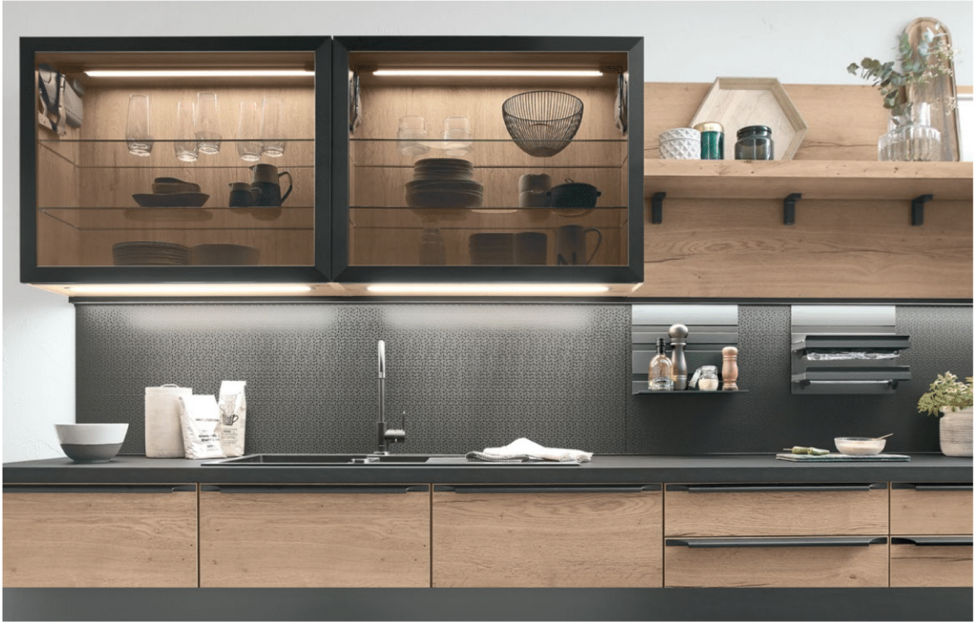
At the beginning of a new decade, many of us are looking to the future and wondering what will change in our lives and our homes over the coming years, and this was certainly a topic of discussion at the 2020 Kitchen & Bath Industry Show (KBIS). I have already written two blogs about my experience as a Designhounds KBIS and Modenus influencer at this magnificent trade show, which took place in January in Las Vegas, Nevada, but there’s another important and exciting trend I simply must share with you, which is exemplified by two of my favorite European Kitchen and bath brands: Nobilia and Compac. More on these powerhouses in just a moment, but first a little background on the current U.S. construction, architecture and design market and where it is taking us.
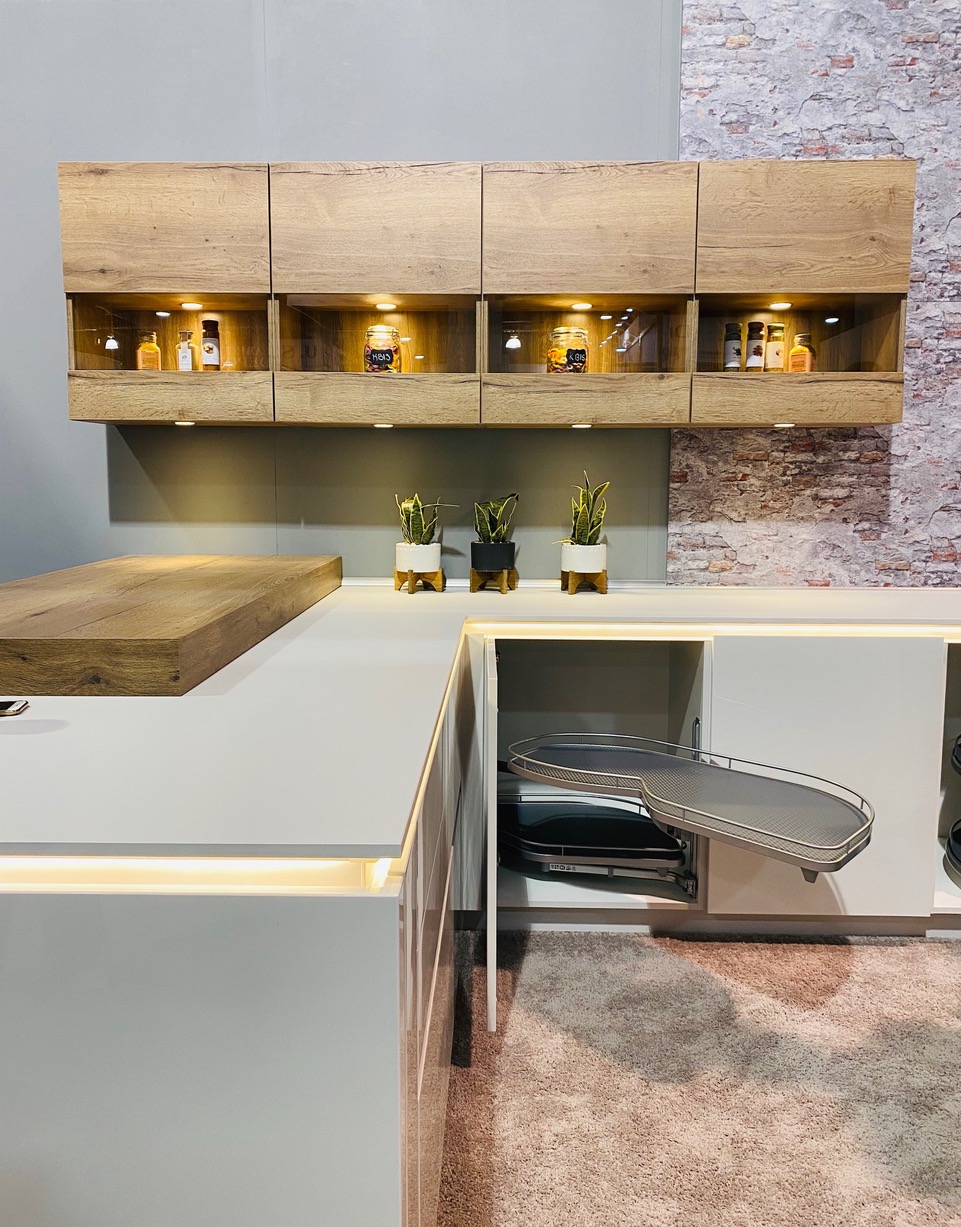
By far the biggest consumer influencers on design and architecture today, Baby Boomers and Millennials together are responsible for 50 percent of all remodels, replacements, and new construction in the U.S. These two demographics have some clear differences in priorities, but also a surprising amount in common.
With a U.S. population of 78 million, Baby Boomers still have more disposable income than any other generation, and their focus today seems to be on downsizing and rightsizing. Gone are the days of exorbitant square footage. Boomers want to live in beautiful, functional spaces that fit their desires and needs, and that often means going smaller, and inherently more eco-conscious way of living.
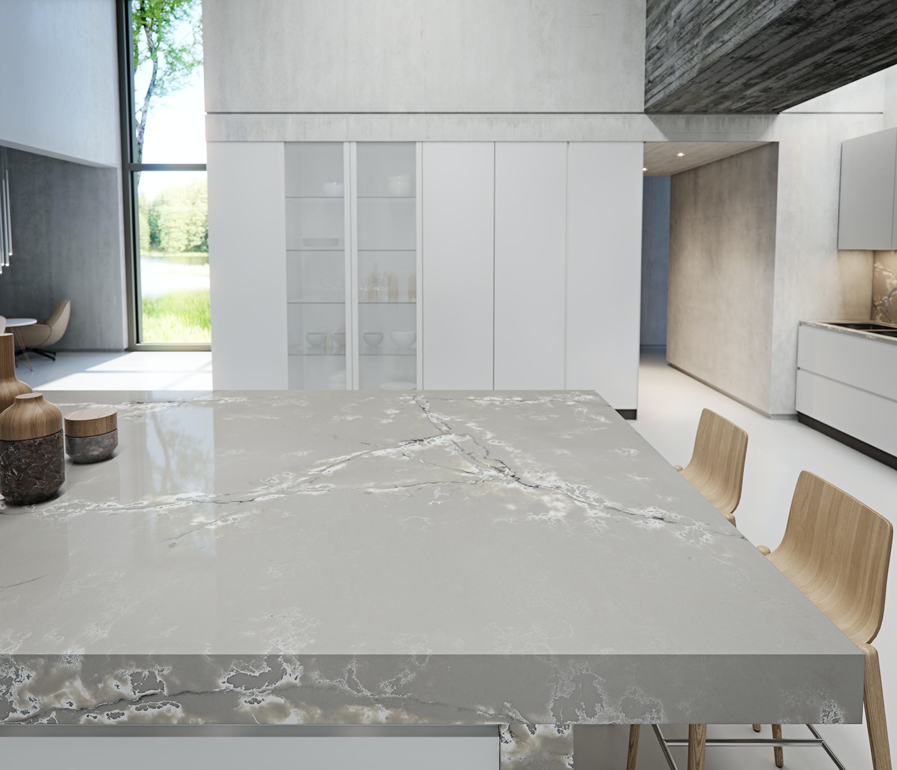
American Millennials, who total around 80 million, have different attitudes toward spending than Boomers, since they mostly fit under the umbrella of what we refer to in the industry at HENRYs (High Earners, Not Rich Yet). Millennials are adapted to experiential, evangelistic avenues of spending. They want to know the story behind what they buy, and know that their purchases support an ethos they believe in. Often, this also means going smaller rather than larger, even as their families may be growing.
Both Boomers and Millennials value products and aesthetics that marry technology with wellness, whether they be in the form of whole home integrated technology, sustainable and healthy materials, or more efficient spaces that maximize every square foot. We also see that both groups are trending away from big cities in order to save money, often toward the South and Midwest, regions where small living is less necessary but increasingly desirable.
We see these trends as much in the appliances and furniture American buyers choose as we do in the housing market itself. In 2019, transitional design styles dominated the interiors market, and both transitional and contemporary designs are expected to dominate over the next three years. These styles feature simple, timeless shapes that exude sophistication, often with either straight or softly rounded lines, and neutral elements paired with pops of bold color.
FUNCTIONALITY AND SUSTAINABILITY
We are most familiar with innovations that have been made in appliances—featuring smart, integrated technology and more efficient energy usage—but we are now starting to see a new series of innovations in cabinets, countertops, lighting, and bathroom fixtures. New approaches to cabinet design include elements such as hidden handles, LED interior lighting, and vertical-lift doors, with motorized opening and closing mechanisms that activate at the touch of a button or a simple tap of the knee. We also see a push toward wellness-driven hands-free faucets, integrated touchpad control centers, and visual elements such as waterfall countertops. Increasingly, functional fixtures in our homes are being designed to simultaneously serve as works of art, so that when not in use, they still actively signal their value.
All of these trends inform another one, which is the rise of European designs in the U.S. market. European kitchen and bath companies naturally fit into this developing aesthetic, as they have emerged from the Bauhaus movement.
Two companies in particular are making waves in this space, bringing a new sensibility into the North American kitchen and bath market.
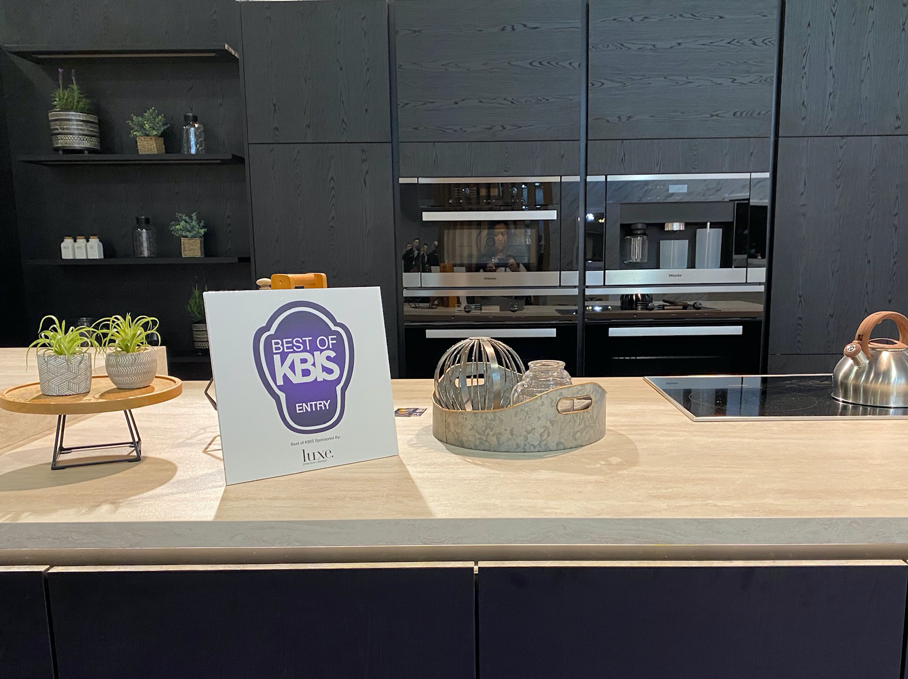
Nobilia, a German company, is Europe’s largest kitchen manufacturer and has been producing kitchen furniture for more than 70 years. Worldwide, Nobilia serves more than 90 countries and makes more than 3,500 pre-sold kitchens per day. One reason I love Nobilia is that the company has a strong ethos of sustainability. It only uses wood from sustainably managed forests and is a pioneer in emissions standards. Nobilia has achieved nearly every environmental certification available in its market.

Nobilia is now perfectly poised to enter the U.S. kitchen and bath market, as it already espouses the values North American consumers are adopting. Form always follows function; every piece and design element is purposeful. It excels at both transitional and contemporary interiors. And it is constantly developing even more technologically advanced materials.
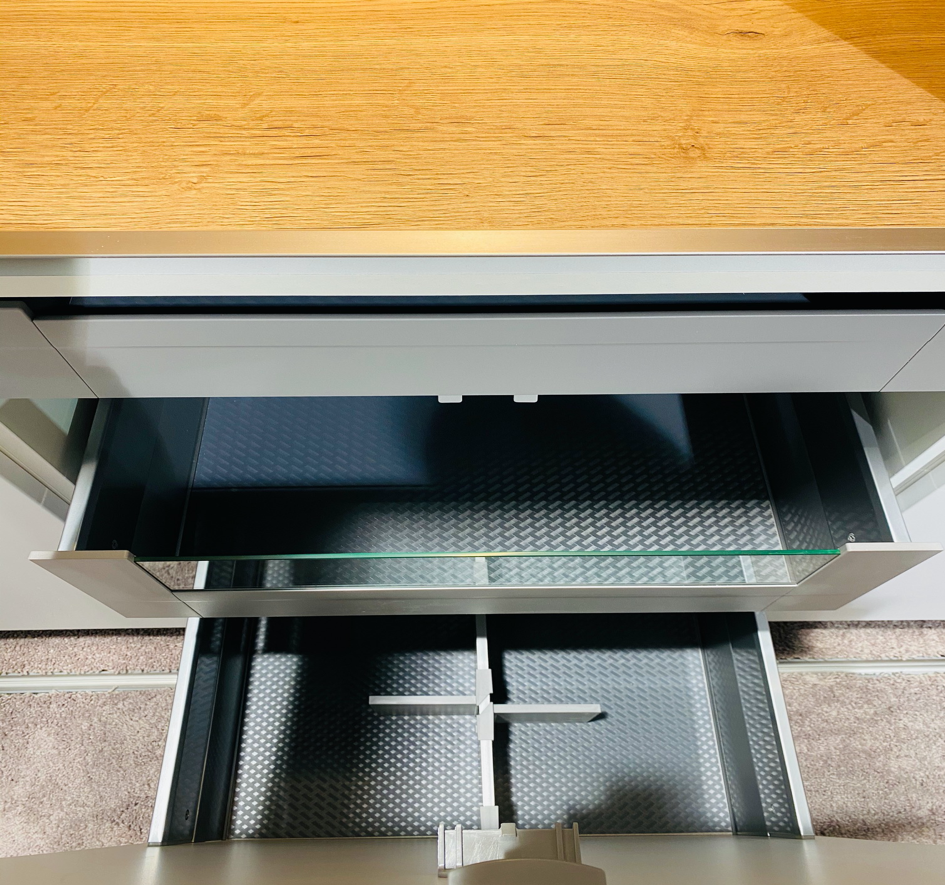
We have seen the desire for European designs in the North American market for some time—look no farther than the proliferance of IKEA products, even across socioeconomic groups. Until now, though, consumers who wanted to enjoy the sensibilities of European designs had limited options, with no middle ground in cost. Take the build of a medium-sized (150–350 ft2 / 14–33 m2) kitchen as an example, since kitchens of this size make up 73 percent of the market.
IKEA occupies the space at the low end of the market. The average cost to build a medium-sized kitchen using IKEA products is $10K. The other European brands in the U.S. market—such as Eggersmann, Arclinea, SieMatic, Bauformat, and so on—exist on the opposite end of the spectrum, with an average cost of $250K for a midsized kitchen.
Nobilia now presents a new option in the price continuum, with an average cost of $48K for a kitchen of that size. Finally, there is a more approachable solution for clients who want to experience the benefits of European kitchen design at its best: artistic, modular, efficient, and integrated holistically with the entire home. Nobilia also produces bathroom furniture.
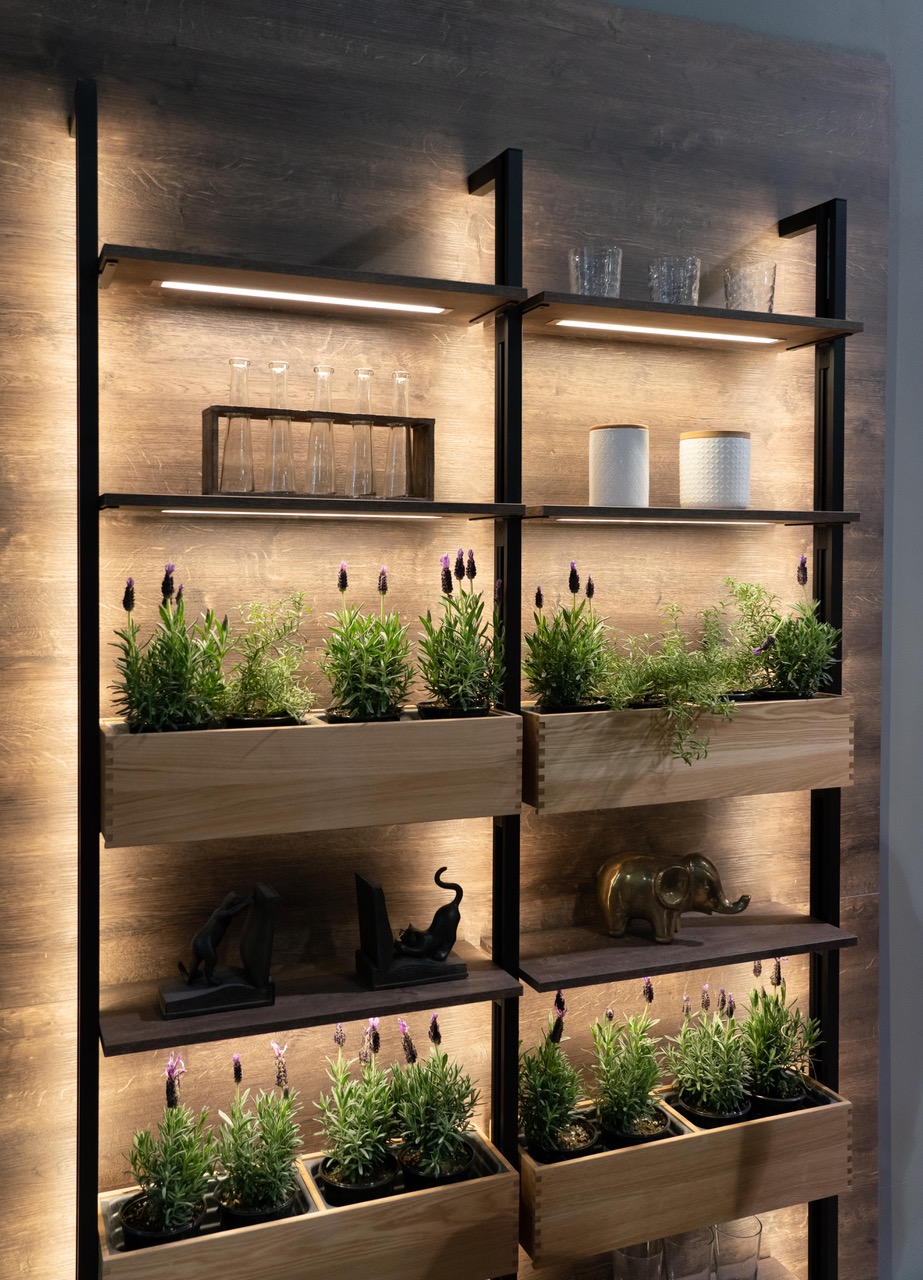
One of my favorite trends being pioneered by European designers is that of furniture as sculpture, and no one does it better than Compac.
Compac is a Spanish surfaces company that has been around for more than 40 years. It is known for the immense quality of its materials, producing the most advanced technological quartz and marble available today. The stone that comes out of Compac is the hardest stone used in construction. Even more impressive, though, is the company’s focus on sustainability, using innovative processes to achieve ecological benefits.
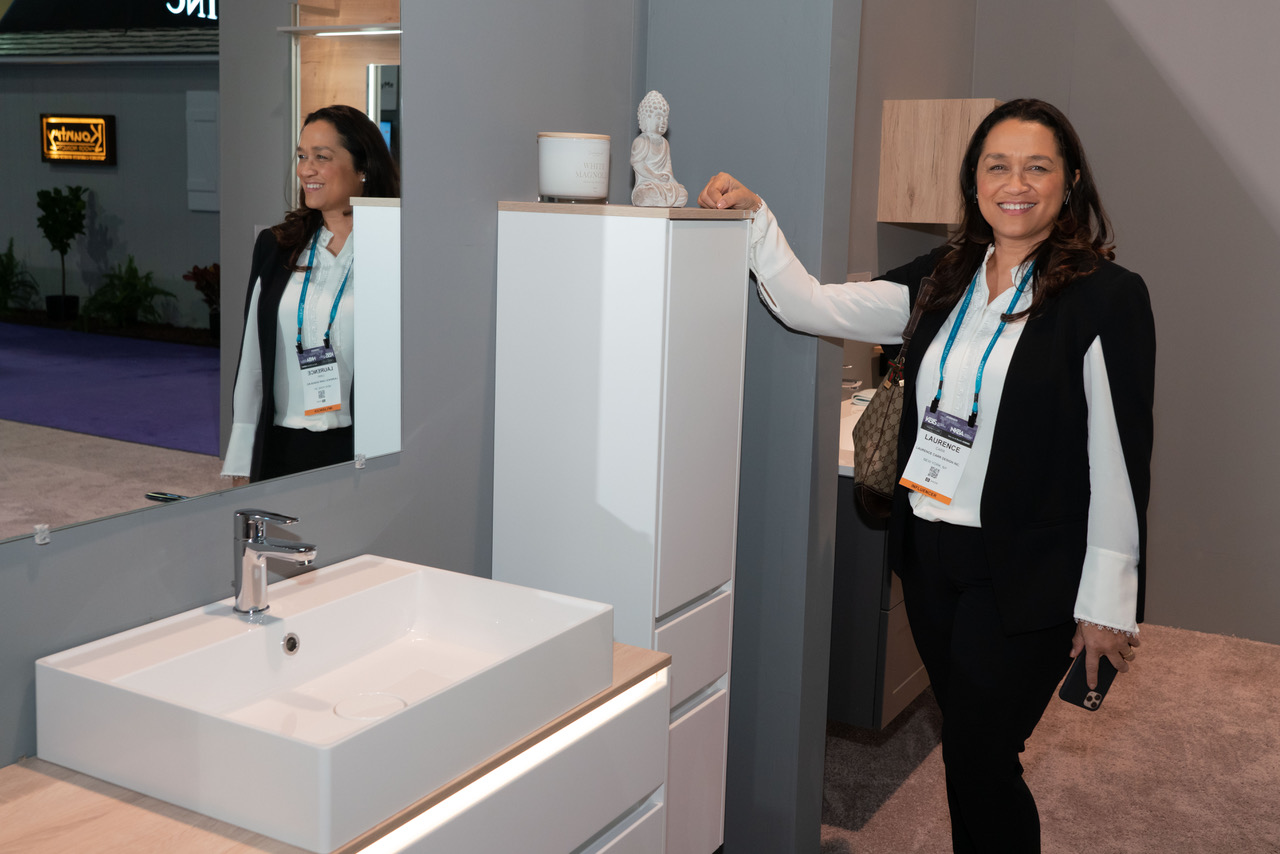
To offset CO2 emissions generated during shipping as well as production, Compac regularly plants trees. At its Abrantes factory in Portugal, it has so far planted more than 30,000 native pine trees. Compac also has systems set up to collect and store rainwater for use in its industrial processes, in addition to reusing 95 percent of the water used in production.
What truly sets Compac apart is its designs, which are always avante-garde and deeply thoughtful. One of the most inspiring presentations I saw at KBIS 2020 was Compac’s new Ice of Genesis collection, which was made in collaboration with the immensely talented artist and designer Arik Levy.
Inspired by the great ice lakes found in the Arctic, the stone from this collection—which can be used for countertops, walls, flooring, or nearly any other surface you desire—reveals visual fragments similar to those produced by natural stone, yet it has some quality that feels almost otherworldly. Rather than other stone slabs you might find, which advertise their beauty solely on a two-dimensional plane, the Ice of Genesis collection has a surprising material transparency. The appearance is at once that of stone and ice; you do not gaze at it so much as you gaze into it. Ethereal and grounding, these pieces exquisitely balance the perception of fragility with the reality of enduring strength.
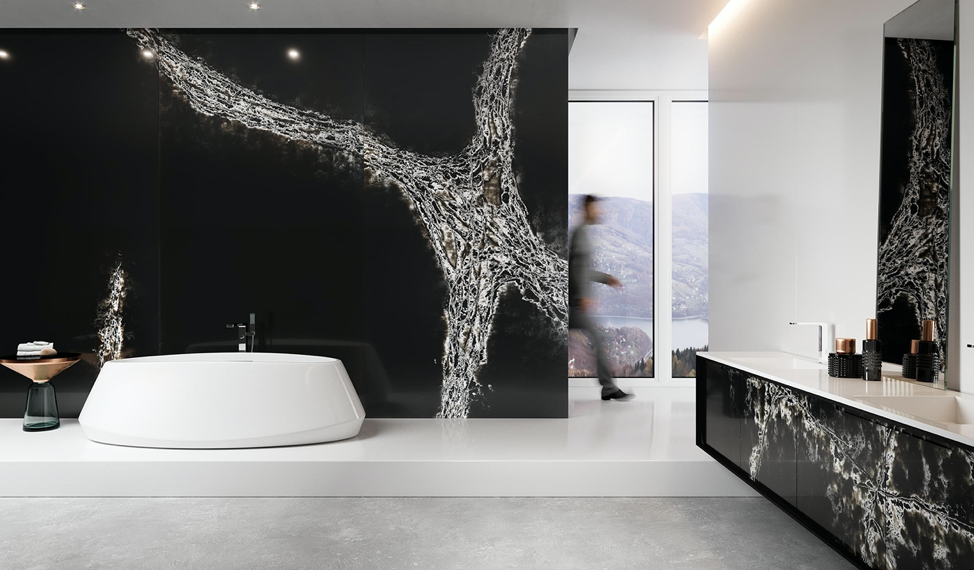
This unbelievable series comes in three colors, each intended to evoke a different sensation. The black pieces represent abstraction—indeed, looking at them part of you feels as though you are floating in space, witnessing the eerie glow of far-away galaxies and nebulae. The white pieces speak directly to ice and coldness. And the almost terracotta red series was designed to mimic the warmth of the earth.
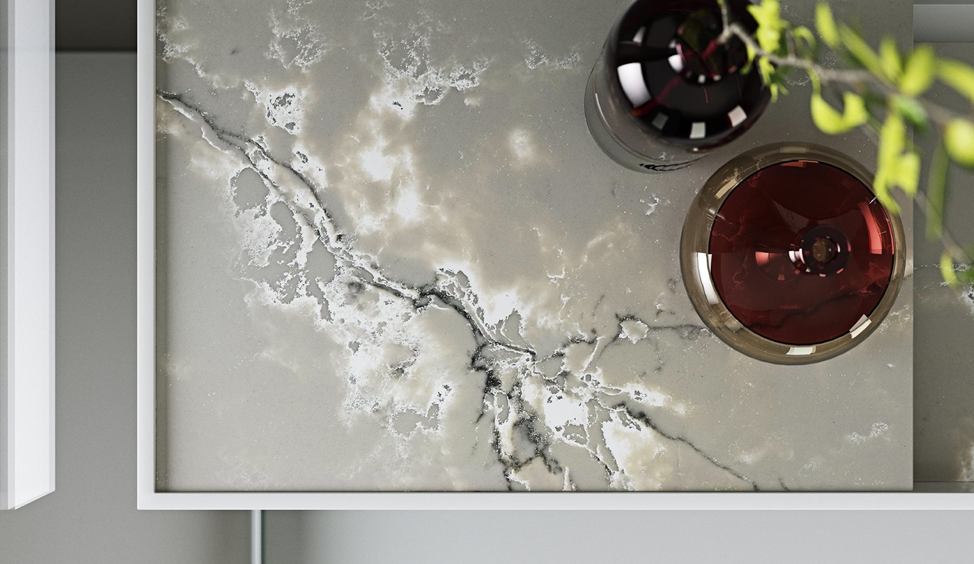
Another element to this collection is a series called Zoom, which takes the same ethereal qualities as the rest of the collection and magnifies the veining to create unique works of art at a massive scale.
Connected to the Ice of Genesis collection is the Waterstorm series, which truly takes the name of sculpture. The bathtub and washbasin, together and independently, serve as functional art, where the use of the objects actually seems secondary to their beauty. I imagine that having these pieces in your bathroom would make you feel as though you live in an art gallery, in the most sensational way.
Crafted to look as though they are each carved from giant blocks of mineral—as though a perfectlywhite asteroid had landed in your bathroom and been molded before your eyes—their lines echo back to that of Roman baths. They are chiseled to look as though they are always in motion, the walls of the pieces themselves cascading like eternal waterfalls. It is impossible to stand next to them and not want to run your hand along their curves, which appear so much like waves. I had to try it. Get in the tub!
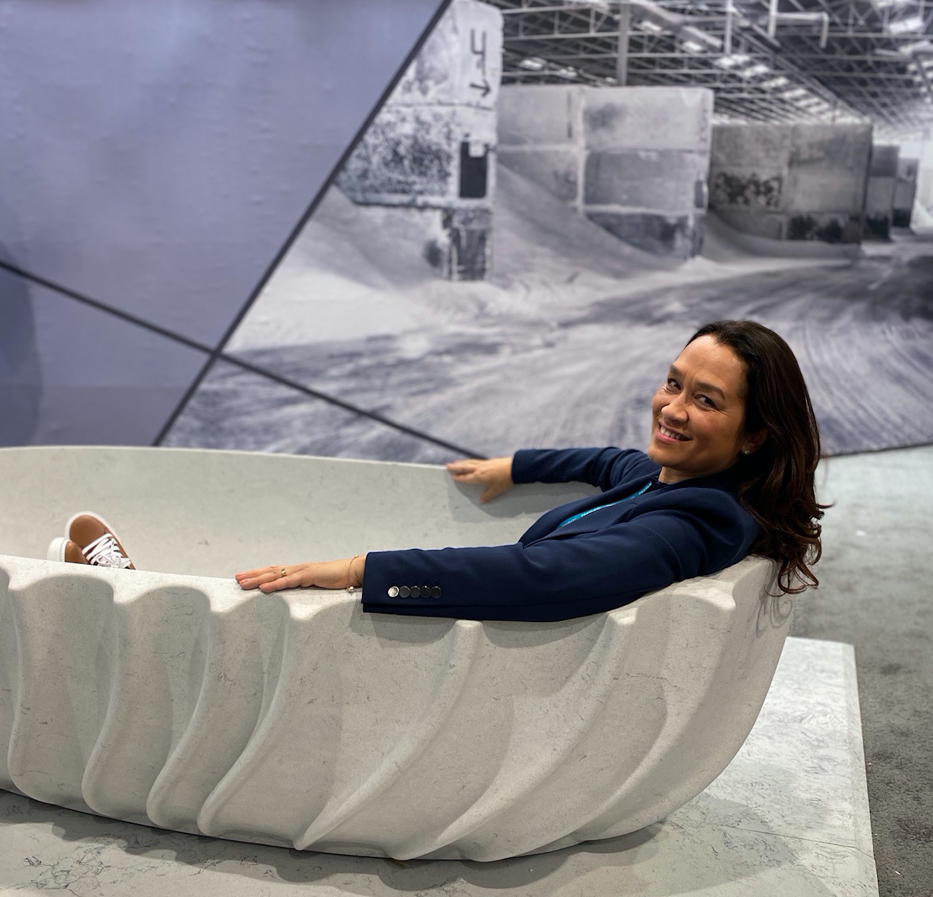
Compac has created a new form of art with these stunning pieces, which I can’t wait to share with my clients. Look at these mood boards we were able to play with at their booth!


There is so much to gain by sharing our designs and sensibilities across cultures and continents, especially as they relate to sustainability, which is if anything a global issue. I’m thrilled to see such innovative and thoughtful companies connecting with North American consumers. At Laurence Carr Design, sustainability and wellbeing are always our first priorities, as they have been since the day we first opened our doors.
Companies like Nobilia and Compac are perfect examples of how dedication to our planet can be not only beautiful, not only luxurious, but legendary.
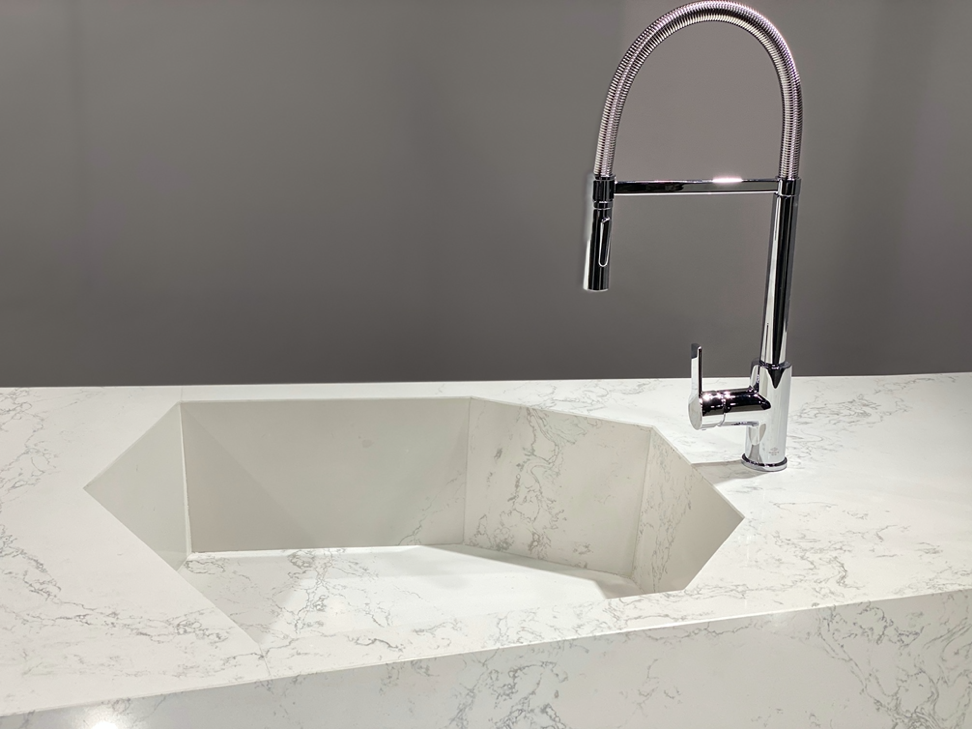

As this is my third and final blog on KBIS 2020, I would like to thank the sponsors for a fun, super enjoyable and well organized Designhounds KBIS 2020 tour by Veronika Miller-Eagleson, founder and CEO of Modenus a comprehensive digital resource and design industry directory.
Compac
Thermador
Mr Steam
Control4
Nobilia
KBIS
Modenus
Also, follow my wickedly talented fellow designhounds KBIS bloggers on their platforms and social media for more insights on the Kitchen and Bath Industry show 2020 in Las Vegas.
Emily Clark
Christine Kohut
Lynn Byrne
Jennyfer Tampasis
Laura Muller
Margot Austin
Toma Clarks Haines
Nikki McNeil
Jennifer Hyman
Allison Matison
Alice Lopez
Amanda Carlson
Nicole White

